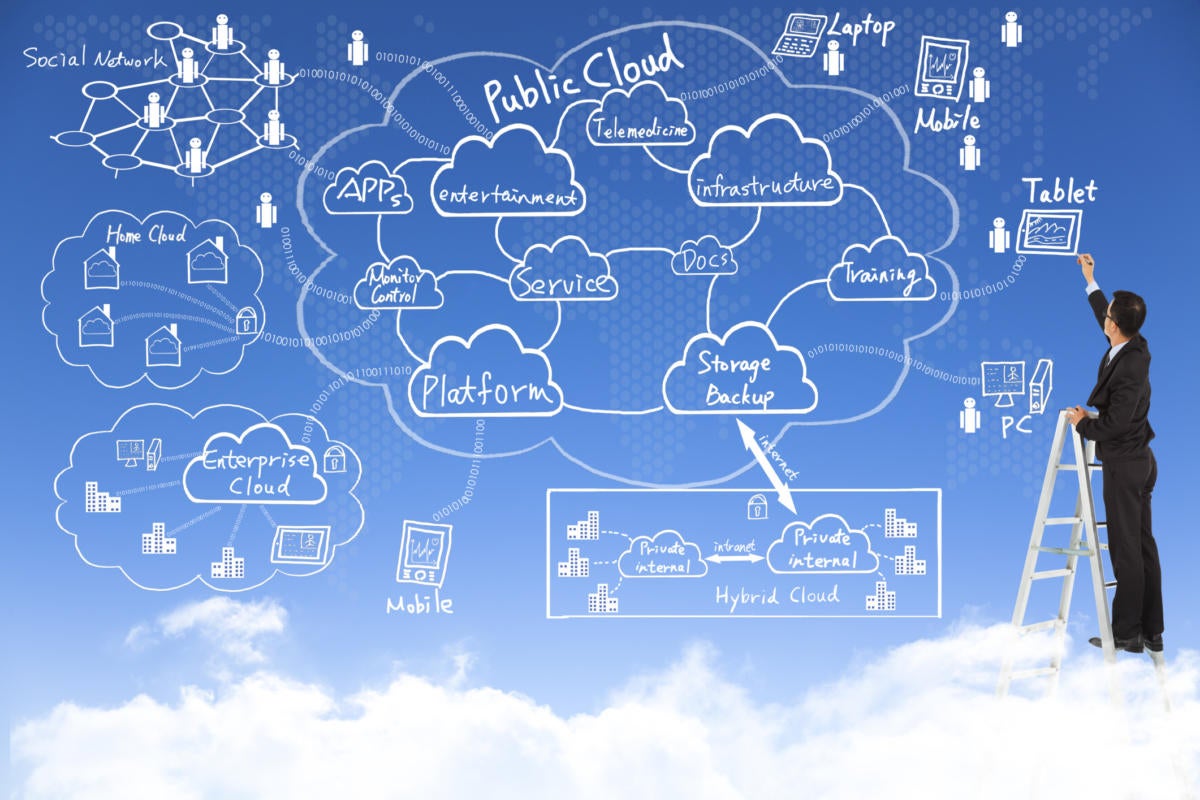Going boldly where no data scientist has been before
“Millennials think differently, and that’s had a retail and marketing impact. Millennials have 52 per cent of the US retail market and it’s a similar story in Europe. They’re about sharing, they don’t have the same ideas about owning capital, about owning homes. I thought: ‘There’s a complete demographic shift coming’.” With global blockchain-based assets now valued at more than $154billion, that assessment sounds about right, and TAB’s analytics service for the crowd finance industry has become the industry’s benchmark. Advantage Mackay. “I am responsible for the strategic leadership of the business, supporting and steering the executive team to reach their potential and achieve both commercial and shareholder returns in an effective and timely manner,” says Richard, while also wondering why Cambridge doesn’t have any blockchain technology of its own. Answers on a postcard please.
PowerShell Functions for Reusability and Restartability in Azure
There are several components, such as resource groups and storage, that are needed with almost anything you do on the Azure platform. In this article, I’ll demonstrate two PowerShell code samples that illustrate these principals. First though, I’ll define our principals. Reuse is the ability to create a piece of code that you can use over and over. PowerShell provides a great mechanism through its native ability to create functions. You can create a core library of functions which you can call from all your scripts. The second principal comes in the ability to easily restart your scripts. All kinds of things can cause your PowerShell scripts to crash: a bug in your code, a bad parameter, or perhaps something outside the code such as a server that goes down unexpectedly, or even a simple loss of internet connectivity.
Smart CityBeacons may be coming to a city centre near you
The CityBeacon is expected to make a splash when kiosks are deployed: "Working on CityBeacon deployment has been an amazing project. The 4 metre high kiosks are a sight to behold and really grab the public’s attention when they are walking down the street. People naturally gravitate towards the kiosks and are pleasantly surprised when they are able to access valuable public services," continued Ubert. "Many cities around the world want to make the transition into a smart city. They want to offer citizens easy-to-use solutions that can be managed via one platform and this is where CityBeacon excels. The next step is to scale so that the platform is deployed around the world. We are in discussions with major cities in Belgium, Spain, France, Germany, UK, Nordics and even outside Europe," he added.
Fascinating Ways Machine Learning and Geolocation Tagging Are Intersecting

Data is the fuel that powers efforts in AI. As databases grow, the way we use the information is changing. For example, in the early days of computers, an IP address could tell servers where the connection request was coming from. This location data would be enough to tell companies where their users were located. But the reliability of IP addresses have changed – especially with the advent of VPN and other IP masking tools. Advanced IP geolocation tools like IP2Location, now allow for servers to make highly educated guesses as to the location of the user. This reliable location data adds a new dimension to modern database entries. For example, a machine learning platform can identify patterns based on the location of the originating request. I’ve worked with data-driven marketers that use these kinds of insights to decide on where a billboard should be placed.
Blockchain Pumping New Life Into Old-School Companies Like IBM
The blockchain enables companies doing business with each other to record transactions securely. Its strength lies in its trustworthiness: It is difficult to reverse or change what’s been recorded. The blockchain can also hold many more documents and data than traditional database storage, allowing for more nuanced insights and analysis. It can also hold embedded contracts, such as a lease for a car, whose virtual key could be transferred to a bank in the event of a default. “Blockchain is one of the bright sectors in technology,” said Roger Kay, president of Endpoint Technologies Associates Inc. “Since blockchain infrastructure is fairly beefy, there will be a large pool of revenue associated with sales of equipment, software and related services for blockchain installations.” In addition to hiring third parties for cloud use, companies will rely more on their own databases for storage, said Amit Zavery, senior vice president of Oracle Cloud Platform.
We Were Kings or When Things Went to Zero
All is not lost for banks and insurers, but it will be very hard for them to compete against savvy tech giants on their technological home turf. The financial industry has to think fast to find ways to compete before their business oxygen runs out. One solution that banks and insurers should pursue aggressively is to embrace the fintech and insurtech industries for their innovative business spirit and fast, direct execution approach to new ideas. That means financial institutions should buy what they can or partner with startups to make up for all the shortcomings that legacy brings. Size and regulation won’t be enough to protect incumbent financial institutions against new competitors, as we have seen in many other industries. Another idea might be for financial institutions to place advertisements on their websites or apps to compensate for loss of profit margins. I don’t think this is the only solution, but financial institutions must innovate beyond their core areas of expertise and standard industry practices.
Board's role in risk management evolving
In spite of the overflow of regulatory expectations, study authors found that the key traditional role of boards—representing shareholders—has not been forgotten. “Our risk committee charter reviews showed that committees (under the remit of the overall board) appear to be prioritizing this management accountability aspect of oversight,” the report states. Still lacking, in charters at least, is “issue radar”—attention to emerging risks. While the percentage of committee charters mentioning cyberrisk grew over 2014, only about half the charters mention this specifically (47% versus 25% in 2014). Two other issues receiving even less mention: third-party risk (13%)—a major concern of regulators and a key issue as partnerships with fintech firms beckon—and the risk of unethical employee conduct (7%). “Both issues have led to billions in fines for many large banks across the world,” the report states.
A good IT orchestration system saves time for users and admins

A well-designed IT orchestration system takes away the frustration and manual intervention to create VMs or other IT resources, as well as the long waits and paperwork for app owners who need them from IT. The whole process is subject to workflows, which implement business logic and decisions into practices. They can also include approvals, resource allocation limits and other customizations. ... Some well-designed orchestration portals include selections for the workflow, such as Mirror the network of the following server or I know which virtual LANS I need. Including options instead of setting a rigid path helps people who are not technically inclined easily build servers. IT orchestration improves IT lifecycle management, cost management and sprawl prevention. As mentioned previously, automation feeds orchestration, and the benefits of automation are clear.
Rapid Growth in Security Market Raises Question: How to Pick a Startup
The question for enterprises, then, is how to choose a security startup that not only has good technology, but that will still be around to support it in a few years. One data point is to look at emerging technologies that seem to be garnering the most traction among venture capitalists, who will help their financial future until they are ready to fly solo. One factor to look for is the startup's ability to cut down on the noise in security operations, experts say. "The market is shifting to simplification. We now have more alerts than people want to deal with, so they are seeking ways to simplify the security operations center [SOC]," Casado says. Security for industrial IoT and physical security for drones, smart cameras, and smart locks are also areas to watch, he states. Consolidation of security technology in the data center is another shift occurring in the security industry, says Mathew.
Mega increase in cloud adoption underway

The software and network of a user's device is the frontend. The frontend serves as an interface to exchange data and requests with the backend. The backend, which is what you will typically hear referenced as "The cloud," is actually the servers and data center storage technologies of a hosting service.This architecture may sound boring and functional, but, importantly, it allows you to access your backend through the internet, from various locations simultaneously as desired. A centralized cloud server (a virtual machine rather than a physical one) is the intersection of the front and back ends. This technology, the centerpiece of the cloud Hosting service, allows you to respond to user requests and monitor traffic seamlessly. In terms of return on investment, the IT conference Interop ITX’s 2017 State of the cloud report found that lower cost was listed alongside speed, reach, access, and scalability as a top cloud benefit.
Quote for the day:
"To acquire knowledge one must study, but to acquire wisdom one must observe." -- Marilyn vos Savant
No comments:
Post a Comment